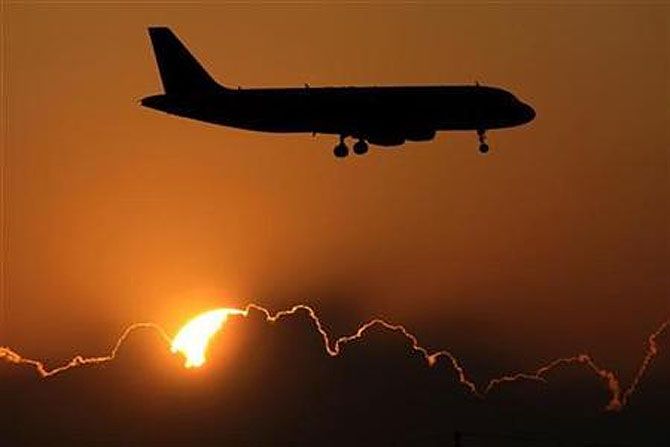 | « Back to article | Print this article |
DGCA, the main pilot flying the airline or the commander in the pilot’s seat need to pull up their socks to ensure flying remains the safest travel option in India, says Anjuli Bhargava.

The year 2019 has been a chaotic year for Indian aviation so far - what with IndiGo’s spate of cancellations, Jet’s closure, safety incidents galore (seven across airlines in a span of a few days) and more recently the IndiGo spat.
Even as the IndiGo saga grabs headlines, I think the more worrying issue is passenger safety, an area that is non-negotiable.
On June 30, July 1 and July 2, three SpiceJet aircraft overshot or veered off the runway.
Of the three, the flight landing from Jaipur in Mumbai that overshot the runway was the scariest and was classified as an accident by the authorities.
From what I could gather, here’s what happened.
The rain had been relentless and a fair amount of water had accumulated on the runway.
A previous SpiceJet flight that came in reported to the ATC that his braking action had been poor and that he should stop further landings.
Whether this message was conveyed by the ATC to the next incoming flight is not clear but the Jaipur-Mumbai flight pilot made at least one mistake - he did not stabilise the aircraft as he is required to and chose to land (as I said, it’s not clear whether he had received a warning).
The aircraft landed beyond the “lakshman rekha” so to speak, his braking action was poor as well and the aircraft went out of control and overshot the runway.
The nose landing gear of the aircraft collapsed, the tyres sunk in and the passengers had to be evacuated after getting the fright of their lives.
All in all, the incident was serious enough to be classified as an “accident” by the authorities.
Action post the incident was swift.
The two pilots were suspended pending inquiry. A DGCA audit held four people in the airline responsible.
The head of flight safety for SpiceJet resigned and the head of training and flight operations were relieved of their posts.
Certain new guidelines for stabilisation of aircraft were introduced within the carrier that require the pilots to adhere to even more stringent norms than prescribed by the authorities.
In my view, this is not enough.
In a country like India where commercial considerations seem to always override all other considerations, the DGCA should consider making the CEO or the face of the airline the accountable manager (accountable managers are the ones held responsible by the authorities for safety).
In an airline like SpiceJet, this would be Ajay Singh and in IndiGo, it would be Rahul Bhatia.
When major policy changes that affect commercials are discussed with government, it is these people who either represent or lobby at some level.
Let the promoter or the CEO be held responsible if anything goes wrong on the safety front and you’ll have much more alacrity in the system.
Second, a more horrific thing I learnt post this incident is that the first officers (across airlines) who get their command usually on completion of 3,000 hours of flying have very little practice of real time landings in poor weather conditions.
So here’s this first officer who suddenly finds himself in the hot seat (read: commander) one day with a relatively inexperienced colleague in the next seat and he’s told to land out of the blue in the most adverse of weather conditions.
Post this scary incident, a few co-pilots who’d just got command chose to call in sick rather than risking Mumbai’s wrath in those few days.
Thank god they chose to err on the side of caution and were not cocky and over-confident as many of their brethren tend to be.
A third scary piece of information was conveyed to me by another senior commander in a chat post these incidents.
He said that often, even when aircraft are not stabilised or landing conditions are not quite perfect and require the pilot to go around, stabilise the approach and come in again for landing, they don’t.
These pilots choose not to err on the side of caution as they have a bad case of “get-home-itis”.
They’re fed up of the flight, want to get it over and done with it and go home.
Flying in general is safe and they feel they can manage. Mostly, they do.
Not reassuring for us passengers but this whole Indian chalta hai attitude takes over.
So, all in all, I’d like to end by asking all commanders to wake up - be it the DGCA, the main pilot flying the airline or the commander in the pilot’s seat.
We’re fortunate such incidents occur only occasionally.
But let’s learn from them and stop them from turning into accidents.
Photograph: Max Rossi/Reuters